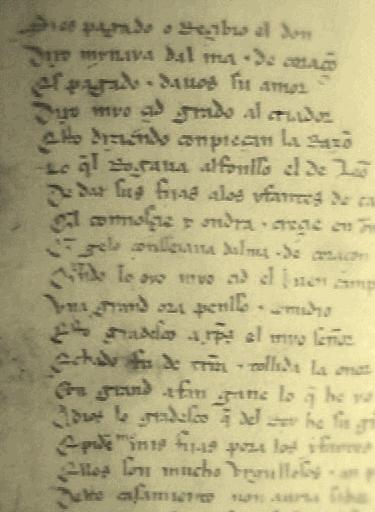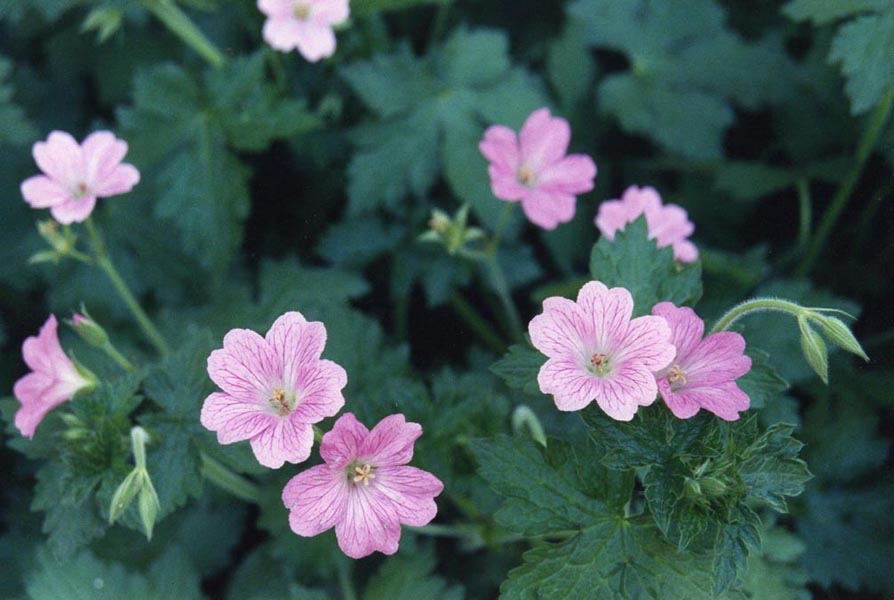|
Rosa Eglanteria
''Rosa rubiginosa'' (sweet briar, sweetbriar rose, sweet brier or eglantine; syn. ''R. eglanteria'') is a species of rose native to Europe and western Asia. Description It is a dense deciduous shrub 2–3 meters high and across, with the stems bearing numerously hooked prickles. The foliage has a strong apple-like fragrance. The leaves are pinnately compound, 5–9 cm long, with 5–9 rounded to oval leaflets with a serrated margin, and numerous glandular hairs. The flowers are 1.8–3 cm in diameter, the five petals being pink with a white base, and the numerous stamens yellow; the flowers are produced in clusters of 2–7 together, from late spring to mid-summer. The fruit is a globose to oblong red hip 1–2 cm in diameter. Etymology Its name ''eglantine'' is from Middle English ''eglentyn'', from Old French ''aiglantin'' (adj.), from ''aiglent'' 'sweetbrier', from Vulgar Latin *''aculentus'' (with the ending of ''spinulentus'' 'thorny, prickly'), from Latin ... [...More Info...] [...Related Items...] OR: [Wikipedia] [Google] [Baidu] |
Carl Linnaeus
Carl Linnaeus (; 23 May 1707 – 10 January 1778), also known after his ennoblement in 1761 as Carl von Linné Blunt (2004), p. 171. (), was a Swedish botanist, zoologist, taxonomist, and physician who formalised binomial nomenclature, the modern system of naming organisms. He is known as the "father of modern taxonomy". Many of his writings were in Latin; his name is rendered in Latin as and, after his 1761 ennoblement, as . Linnaeus was born in Råshult, the countryside of Småland, in southern Sweden. He received most of his higher education at Uppsala University and began giving lectures in botany there in 1730. He lived abroad between 1735 and 1738, where he studied and also published the first edition of his ' in the Netherlands. He then returned to Sweden where he became professor of medicine and botany at Uppsala. In the 1740s, he was sent on several journeys through Sweden to find and classify plants and animals. In the 1750s and 1760s, he continued to collect an ... [...More Info...] [...Related Items...] OR: [Wikipedia] [Google] [Baidu] |
Vulgar Latin
Vulgar Latin, also known as Popular or Colloquial Latin, is the range of non-formal Register (sociolinguistics), registers of Latin spoken from the Crisis of the Roman Republic, Late Roman Republic onward. Through time, Vulgar Latin would evolve into numerous Romance languages. Its Literary Latin, literary counterpart was a form of either Classical Latin or Late Latin, depending on the time period. Origin of the term During the Classical antiquity, Classical period, Roman authors referred to the informal, everyday variety of their own language as ''sermo plebeius'' or ''sermo vulgaris'', meaning "common speech". The modern usage of the term Vulgar Latin dates to the Renaissance, when Italians, Italian thinkers began to theorize that Italian language, their own language originated in a sort of "corrupted" Latin that they assumed formed an entity distinct from the literary Classical Latin, Classical variety, though opinions differed greatly on the nature of this "vulgar" dialect ... [...More Info...] [...Related Items...] OR: [Wikipedia] [Google] [Baidu] |
World War II
World War II or the Second World War, often abbreviated as WWII or WW2, was a world war that lasted from 1939 to 1945. It involved the vast majority of the world's countries—including all of the great powers—forming two opposing military alliances: the Allies and the Axis powers. World War II was a total war that directly involved more than 100 million personnel from more than 30 countries. The major participants in the war threw their entire economic, industrial, and scientific capabilities behind the war effort, blurring the distinction between civilian and military resources. Aircraft played a major role in the conflict, enabling the strategic bombing of population centres and deploying the only two nuclear weapons ever used in war. World War II was by far the deadliest conflict in human history; it resulted in 70 to 85 million fatalities, mostly among civilians. Tens of millions died due to genocides (including the Holocaust), starvation, ma ... [...More Info...] [...Related Items...] OR: [Wikipedia] [Google] [Baidu] |
Rosa Agrestis
''Rosa agrestis'', the small-leaved sweet briar, field briar or fieldbriar, is a species of wild rose native to Europe, found mostly in southern Europe and occasionally as far as the Caucasus. Sources differ on whether it can be found in northern Africa and Anatolia. A dog rose, it is in the subgenus ''Rosa'', section ''Caninae'', and subsection ''Rubigineae''. It is a close relative of, and very similar to the sweet briar, ''Rosa rubiginosa ''Rosa rubiginosa'' (sweet briar, sweetbriar rose, sweet brier or eglantine; synonym (taxonomy), syn. ''R. eglanteria'') is a species of rose native to Europe and western Asia. Description It is a dense deciduous shrub 2–3 meters high and acr ...'', but with smaller leaves, white to blush petals, and very little odor from either the flowers or the leaves. Although it may be cultivated, most gardeners prefer the sweet briar for its scented foliage and pink flowers. References agrestis Flora of Europe Plants described in 179 ... [...More Info...] [...Related Items...] OR: [Wikipedia] [Google] [Baidu] |
Garden
A garden is a planned space, usually outdoors, set aside for the cultivation, display, and enjoyment of plants and other forms of nature. The single feature identifying even the wildest wild garden is ''control''. The garden can incorporate both natural and artificial materials. Gardens often have design features including statuary, follies, pergolas, trellises, stumperies, dry creek beds, and water features such as fountains, ponds (with or without fish), waterfalls or creeks. Some gardens are for ornamental purposes only, while others also produce food crops, sometimes in separate areas, or sometimes intermixed with the ornamental plants. Food-producing gardens are distinguished from farms by their smaller scale, more labor-intensive methods, and their purpose (enjoyment of a hobby or self-sustenance rather than producing for sale, as in a market garden). Flower gardens combine plants of different heights, colors, textures, and fragrances to create interest and delight the s ... [...More Info...] [...Related Items...] OR: [Wikipedia] [Google] [Baidu] |
Graham Stuart Thomas
Graham Stuart Thomas (3 April 1909 – 17 April 2003), was an English horticulturist, who is likely best known for his work with garden roses, his restoration and stewardship of over 100 National Trust gardens and for writing 19 books on gardening, many of which remain classics today. However, as he states in the Preface to his outstanding book, The Rock Garden and its Plants: From Grotto to Alpine House, "My earliest enthusiasms in gardening were for....alpines." p8 In his obituary in the ''Los Angeles Times'', Clair Martin, rose curator of Huntington Botanical Gardens said: "Thomas set about preserving the heritage of old roses when many of them were on the verge of extinction". Early life Graham Stuart Thomas was born in Cambridge into a family of keen amateur gardeners and musicians. His father William Richard Thomas was a clerk to Cambridge University syndicate. He is said to have developed his interest in plants at the age of six, when he was given a fuchsia as a gift. O ... [...More Info...] [...Related Items...] OR: [Wikipedia] [Google] [Baidu] |
Flora-On
Flora-On is a portal coordinated by the Portuguese Botanical Society containing photographic, geographical, morphological and ecological information for all vascular plant species in Portugal (both in the mainland, Azores and Madeira). The portal was created in 2012 by a group of young biologists within the Faculty of Sciences of the University of Lisbon and has been in constant development since. Work is voluntarily done by botanists, naturalists and researchers. The project does not depend on or receive funding from any institution or company and is purely based on volunteer work. The main aim of the project is to provide the specialized and non-specialized public with free, simple and intuitive access to scientific information on plants that occur in Portugal. Plants are classified through various criteria: taxa, morfological characteristics, endemism, abundance, time of floration, geographical location (by grid, municipalities, Protected areas, etc...), some by conservation st ... [...More Info...] [...Related Items...] OR: [Wikipedia] [Google] [Baidu] |
Serra Da Estrela
Serra da Estrela () is the highest mountain range in Continental Portugal. Together with the Serra da Lousã it is the westernmost constituent range of the Sistema Central and also one of the highest in the system. It includes mainland Portugal's highest point at above mean sea level (although the summit of Mount Pico in the Portuguese Azores islands is higher). This point is not a distinctive mountain summit, but rather the highest point in a plateau, being known as Torre ("Tower" in English). Torre is an unusual summit in that it is accessible by a paved road. The peak has a topographic prominence of and its parent peak is Pico Almanzor, in Spain. The mountain range, situated between the municipalities of Seia, Manteigas, Gouveia, Guarda and Covilhã, is about long and is across at its widest point. It is formed from a huge granite ridge that once formed the southern frontier of the country. Rivers There are three rivers that have their headwaters in the Serra da Estrel ... [...More Info...] [...Related Items...] OR: [Wikipedia] [Google] [Baidu] |
Portugal
Portugal, officially the Portuguese Republic ( pt, República Portuguesa, links=yes ), is a country whose mainland is located on the Iberian Peninsula of Southwestern Europe, and whose territory also includes the Atlantic archipelagos of the Azores and Madeira. It features the westernmost point in continental Europe, and its Iberian portion is bordered to the west and south by the Atlantic Ocean and to the north and east by Spain, the sole country to have a land border with Portugal. Its two archipelagos form two autonomous regions with their own regional governments. Lisbon is the capital and largest city by population. Portugal is the oldest continuously existing nation state on the Iberian Peninsula and one of the oldest in Europe, its territory having been continuously settled, invaded and fought over since prehistoric times. It was inhabited by pre-Celtic and Celtic peoples who had contact with Phoenicians and Ancient Greek traders, it was ruled by the Ro ... [...More Info...] [...Related Items...] OR: [Wikipedia] [Google] [Baidu] |
Flora Iberica
''Flora Iberica: Plantas vasculares de la Península Ibérica e Islas Baleares'' ("Vascular plants of the Iberian Peninsula and Balearic Islands") is a Spanish scientific journal specializing in botany. It was established in 1980. It is published by the Real Jardín Botánico de Madrid ' ( Spanish for ''Royal Botanical Garden of Madrid'') is an botanical garden in Madrid (Spain). The public entrance is located at , next to the Prado Museum. History The garden was founded on October 17, 1755, by King Ferdinand VI, and .... References Botany in Europe Flora of Spain Spanish-language journals Publications established in 1980 1980 establishments in Spain {{botany-journal-stub ... [...More Info...] [...Related Items...] OR: [Wikipedia] [Google] [Baidu] |
Southern Europe
Southern Europe is the southern regions of Europe, region of Europe. It is also known as Mediterranean Europe, as its geography is essentially marked by the Mediterranean Sea. Definitions of Southern Europe include some or all of these countries and regions: Albania, Andorra, Bosnia and Herzegovina, Bulgaria, Croatia, Cyprus, East Thrace, Gibraltar, Greece, Italy, Kosovo, Malta, Moldova, Monaco, Montenegro, North Macedonia, Portugal, Romania, San Marino, Serbia, Slovenia, Southern France, Spain, and Vatican City (the Holy See). Southern Europe is focused on the three peninsulas located in the extreme south of the European continent. These are the Iberian Peninsula, the Italian Peninsula, Apennine Peninsula, and the Balkans, Balkan Peninsula. These three peninsulas are separated from the rest of Europe by towering mountain ranges, respectively by the Pyrenees, the Alps and the Balkan Mountains. The location of these peninsulas in the heart of the Mediterranean Sea, as well as the ... [...More Info...] [...Related Items...] OR: [Wikipedia] [Google] [Baidu] |





.jpg)
